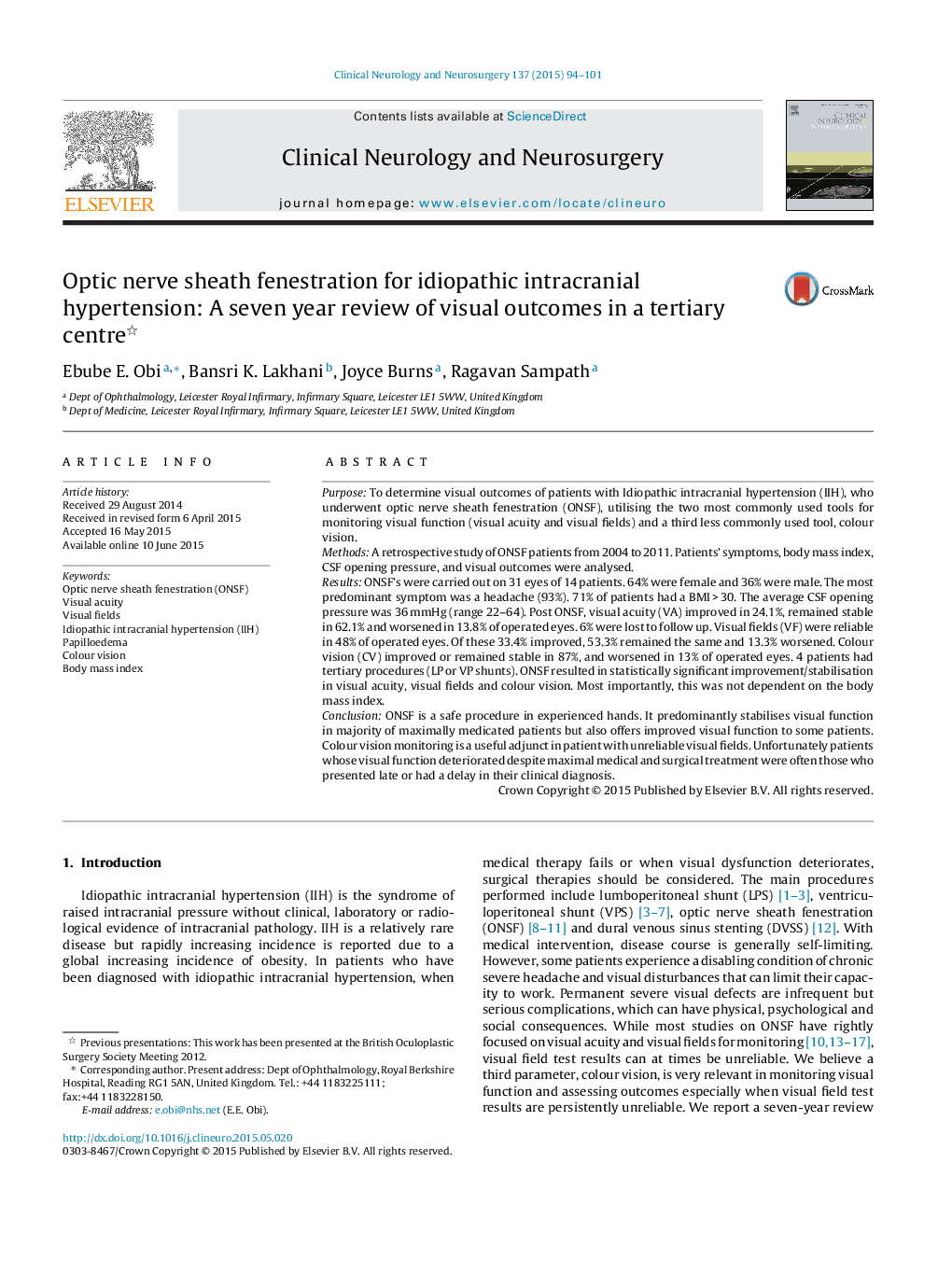| Article ID | Journal | Published Year | Pages | File Type |
|---|---|---|---|---|
| 3039698 | Clinical Neurology and Neurosurgery | 2015 | 8 Pages |
•We examined the results ONSF in patients with IIH and declining visual function (VFn).•ONSF is a very safe procedure in experienced hands – 0% morbidity.•Early ONSF prevented further VFn decline in 82.1% of patients.•Visual improvement or stabilisation was not dependent on the body mass index.•Colour vision is a useful monitoring tool before VFn decline, ensues.
PurposeTo determine visual outcomes of patients with Idiopathic intracranial hypertension (IIH), who underwent optic nerve sheath fenestration (ONSF), utilising the two most commonly used tools for monitoring visual function (visual acuity and visual fields) and a third less commonly used tool, colour vision.MethodsA retrospective study of ONSF patients from 2004 to 2011. Patients’ symptoms, body mass index, CSF opening pressure, and visual outcomes were analysed.ResultsONSF's were carried out on 31 eyes of 14 patients. 64% were female and 36% were male. The most predominant symptom was a headache (93%). 71% of patients had a BMI > 30. The average CSF opening pressure was 36 mmHg (range 22–64). Post ONSF, visual acuity (VA) improved in 24.1%, remained stable in 62.1% and worsened in 13.8% of operated eyes. 6% were lost to follow up. Visual fields (VF) were reliable in 48% of operated eyes. Of these 33.4% improved, 53.3% remained the same and 13.3% worsened. Colour vision (CV) improved or remained stable in 87%, and worsened in 13% of operated eyes. 4 patients had tertiary procedures (LP or VP shunts). ONSF resulted in statistically significant improvement/stabilisation in visual acuity, visual fields and colour vision. Most importantly, this was not dependent on the body mass index.ConclusionONSF is a safe procedure in experienced hands. It predominantly stabilises visual function in majority of maximally medicated patients but also offers improved visual function to some patients. Colour vision monitoring is a useful adjunct in patient with unreliable visual fields. Unfortunately patients whose visual function deteriorated despite maximal medical and surgical treatment were often those who presented late or had a delay in their clinical diagnosis.
